The Pros and Cons of VoIP Services
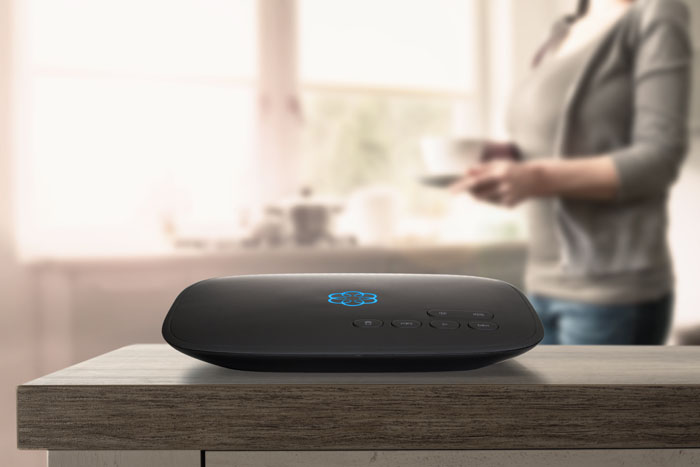
What is a VoIP phone?
A VoIP phone is a telephone system that uses the Internet to complete the phone call. Delivery can either be completely via the Internet, such as phone calls from one VoIP customer to another (especially in the case of two customers using the same service), or handed off to the traditional phone system at some point, like calls to landline or cellular numbers from a VoIP phone.
Voice Over Internet Protocol Technology
What does VoIP stand for? VoIP stands for Voice over Internet Protocol, and its name describes what happens in the process of placing a VoIP call. While you may still use a traditional phone in the VoIP calling process, your voice is transmitted from the phone to some type of device that digitizes it to be sent as a data packet over the Internet.
Typically at some point the data packet is reconverted into a protocol transmittable over regular telephone line to complete the call. A VoIP call may not start over a regular telephone; it may instead start within an app on a smartphone, a program on your computer or a special VoIP phone. In that last case, your voice is captured digitally instantaneously.
VoIP Requirements
You’ll need a special adapter to connect to your phone or a special VoIP phone to place a VoIP call. The adapter may connect to your computer, directly to the Internet via your router or both. Placing calls directly from your computer or a mobile device requires the installation of your provider’s specific application.
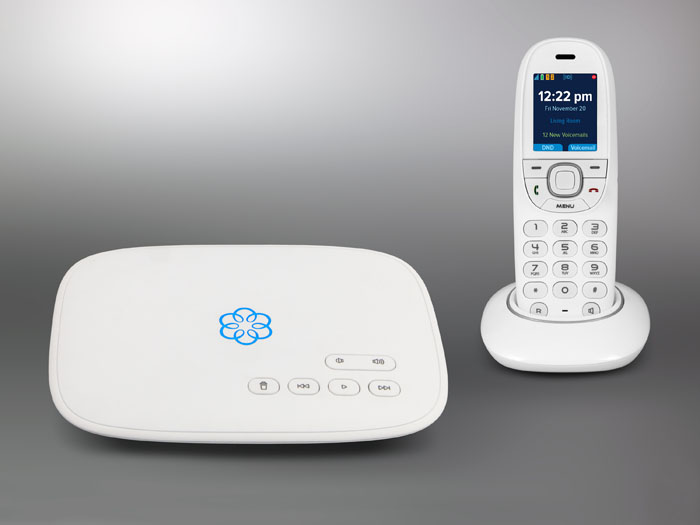
In Ooma’s case, at a minimum you’ll need the Ooma Telo, but we recommend purchasing Ooma Telo and the HD2 handset package to get the best-quality calls. The HD2 handset connects to the Ooma Telo base station wirelessly and can be placed just about anywhere in the house. You can also connect an existing analog phone to the Ooma Telo via the analog phone jack.
A broadband connection is required to place calls. While a super-fast connection is not necessary, Ooma requires a 384 kbps connection, which is equivalent to a typical DSL connection, in order to operate properly. Nearly every cable Internet connection should have sufficient bandwidth to use VoIP.
Using Your VoIP Phone
You can use your VoIP phone in most cases to call just as you had with a traditional phone. There are some differences in how you might be billed, however. While your traditional phone service provider may charge you extra above your monthly service charge to call outside your local area, most VoIP providers — Ooma included — give you free or deeply discounted calling within your home country (and sometimes elsewhere) and to numbers also using your VoIP provider’s service.
International calling is also typically possible, and at rates that are a fraction of your traditional telephone provider’s. For either domestic or international numbers, you’ll hear a dial tone when dialing, and dialing the phone number itself is no different.
Emergency Calls Through VoIP
Early critics of VoIP pointed to the issues the service had when it came to making emergency calls. This was because prior to 2005, there were no regulations on how VoIP calls should be handled. Now, you’ll be asked to enter emergency contact and home address information to ensure this information is transferred to the 911 call center in the event of an emergency — so in most cases, emergency calls are not an issue. New Ooma customers will complete this step during the setup process.
Keep in mind that if you’re traveling with your VoIP phone, you’ll need to update this information to ensure the right address is transferred to the call center. In the event of a power or Internet outage, be aware that your 911 service will not work unless it has a backup battery source, such as a UPS or generator. Ooma allows you to have all calls automatically forwarded to a mobile phone in the case of a power outage.
VoIP is a great option for just about everyone, with an attractive list of features and a price that’s hard to beat. That said, we wouldn’t be telling the truth if we claimed that a VoIP phone system isn’t without its own set of drawbacks. In this article, we’ll take a look at both the advantages and disadvantages of VoIP so you can make the best decision based on your own needs.

Pros – The Advantages of VoIP
Low Cost
Compared to traditional phone service (and in many cases wireless service), VoIP is far less expensive. The simplest explanation why is because of how the technology works. Since your voice signal is traveling over the Internet and not the traditional phone system, your VoIP provider saves a lot of money in “carriage fees,” which are basically fees to deliver your call over phone lines.
Also, the best VoIP phone services typically have a wider variety of plans, including pay-as-you-go features so you only pay for service when you need it. For those who only need a free landline phone service occasionally, over time you’ll save quite a bit of money versus a traditional landline that requires a monthly fee to maintain service.
Portability
You can’t just pick up and move with a traditional phone system. A professional installer needs to come out and connect your home or business to the phone system, which can take several days. With VoIP, all you need is an Internet connection. Most VoIP phone setups are self-install, and you’ll be up and running in a matter of minutes. If you move, you can take your VoIP system with you and reconnect it easily, and you don’t have to change your phone number if you don’t want to.
Many VoIP providers also have options for you to access your VoIP phone system via the Internet, either on the web or via a mobile app.
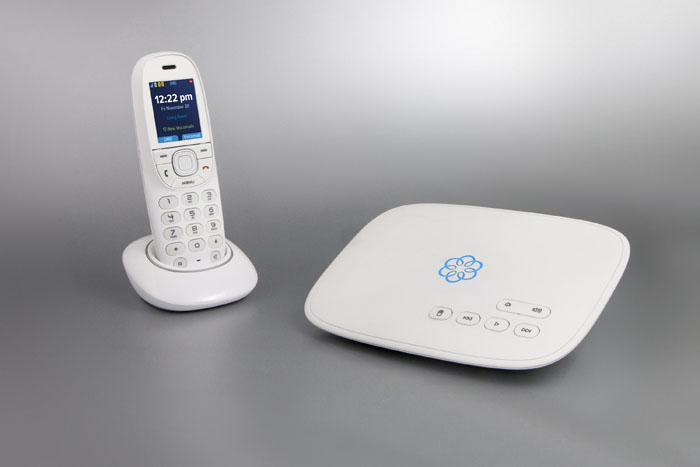
Lots of Features
Traditional telephone companies are well entrenched, so VoIP services have turned to functionality as a way to differentiate themselves and get you to subscribe. This is what makes VoIP service so feature-rich. Just the residential phone service from many VoIP companies provides you with features like conferencing, call waiting, caller ID and call forwarding at no extra charge. With traditional phone service, you’ll often find yourself paying for these as an added service.
Traditional Phone and Fax Support
You don’t need all-new phone equipment to make switching to VoIP easier. Providers like Ooma have devices that will convert the signals from your old telephone and fax machine to digital packets that can travel over the Internet. While we’d recommend you look into VoIP phones eventually, it’s not necessary to start out.
One word of caution, though, when using fax machines on VoIP: Be aware that you may need to adjust the settings of your fax machine to ensure reliable fax service. Printer/fax manufacturer HP has provided some tips on its support website.
Cons – The Disadvantages of VoIP
Bandwidth Dependency
As we’ve already mentioned, VoIP uses the Internet to complete your call. While most of us have an Internet connection that is sufficient to use VoIP these days, other factors may reduce the bandwidth available to your call, such as activity on your local network, like streaming or file transfers.
If your VoIP system doesn’t have sufficient bandwidth, you might find your call quality significantly reduced, or it may have trouble maintaining a connection or connecting to your VoIP provider’s servers. You may need to check your network speed during times of high use if you plan to use a VoIP service.
Emergency Calls
Emergency calling can be a problem for some VoIP users. The 911 system was built with the traditional telephone system in mind, and because a phone line is fixed to a certain location, the system will alert first responders to your location when you call (you don’t even need to tell them). While portability is definitely a plus with VoIP, calling 911 from a VoIP line will only transmit whatever address you provided at setup for 911 services.
If you forget to change this and find yourself in an emergency where you call but can’t speak to confirm, help may be sent to the wrong address, and/or you might be sent to the incorrect 911 facility for your area.
Needs Continuous Power Supply and Internet
VoIP phone systems require a continuous power supply in order to remain operational. That means if power is cut and you have no backup power, your phones will not work. This is different from the traditional telephone system, where power is only needed at the interchange office where calls are routed.
Conversely, if your Internet fails for some reason, your VoIP line will also fail regardless of whether you have power or not. In situations where a continuously operating telephone line is essential — home care services, for example — VoIP may not be the best option for you.
Voice and Call Quality
While most people will not have an issue with voice or call quality on VoIP, some may experience issues from time to time. The most common problems are reduced voice quality and/or what seems like a delay during the call (i.e. the person seems slightly delayed in responding). This has to do with both bandwidth and something called “latency.”
With bandwidth, if your VoIP system detects that there isn’t enough bandwidth to give you the best quality, it may reduce it so the call is still completed successfully. This can happen either before or during the call. At points, the call may even drop out if bandwidth gets too tight, or it may sound scrambled.
Latency can best be described as delay. If there is network congestion, it may take longer for your VoIP data packets to reach their destination. This might result in an issue where the person you’re calling may sound like he or she is taking slightly longer to respond to you. In most cases, however, these problems are temporary and may resolve on their own. Other times, it might require you to reboot either your cable/DSL modem and/or router.
How VoIP Phones Work
- VoIP typically takes an analog call, digitizes it and then sends the call out over the Internet.
- The digital packets are reconverted to analog to complete calls to traditional phone customers.
- VoIP calls can take place from computer to computer.
- VoIP voice call quality can be much better than your traditional phone.
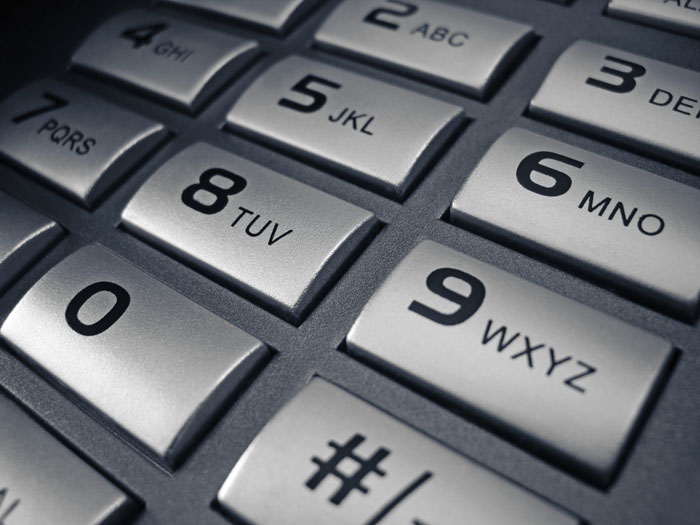
How a VoIP Call Is Placed
There are three common ways a VoIP call is initiated.
ATA: Short for analog telephone adaptor, an ATA is one of the most common ways to connect to a VoIP network. Here, a traditional telephone is connected to a device. What the ATA does is take the analog voice signal created by your telephone and convert it into digital packets that are sent over the Internet, much like an email or software download.
IP (or VoIP) Phones: You can think of an IP phone as a phone with the technology to digitize your voice built right into the device itself. No conversion is needed because the process is done right away, and these either connect to the VoIP service directly through your router or through a Wi-Fi connection. The IP phone doesn’t need to be a traditional phone; there are software-based systems that place calls, like ones you’ll find in computer and portable device applications.
Computer to Computer: The final type of VoIP call requires no traditional phone service to place the call. Skype is a good example. The call is placed through software, and the data packets are transmitted to the person you’re calling directly through the VoIP service’s servers.
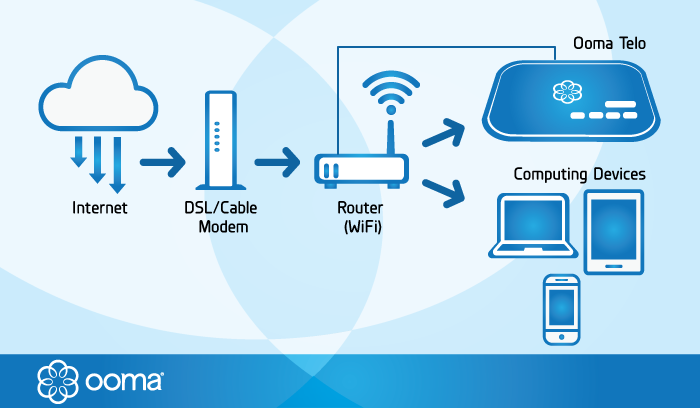
How a VoIP Call Is Routed
To understand how VoIP works, we first need to understand how traditional phone calls work.
With a traditional phone call, when you pick up the receiver, you’ll hear that familiar dial tone. In technical terms, that dialtone is an auditory confirmation that you have opened up an electric circuit to the telephone exchange, which is the central location where calls are routed. When you dial the number, the exchange opens up an electric circuit to the receiving phone, which makes it ring. When the person you’re calling picks up the phone, the circuit is opened and voice is transmitted across this open circuit.
VoIP calls work differently. The Internet serves as your exchange, and picking up your receiver will only start the process of sending data packets to the VoIP server. You still hear a dial tone, but this is now a confirmation that you have a connection to the VoIP server.
This VoIP server then tries to locate the person you’re trying to call. If it is another VoIP number, the VoIP server may direct the call completely over the Internet. If it finds it’s a traditional number, it will take the necessary steps to create that electric circuit like two traditional phones to successfully route the call.
Will I Know the Difference?
There’s a good chance that you won’t know the difference when using VoIP if the person you’re calling is either a traditional phone or VoIP phone customer. However, if you’re using Ooma, you should notice a distinct difference in audio quality when calling another Ooma customer. That’s because of Ooma’s PureVoice HD technology. If you both are using Ooma’s signature HD handsets, you’ll enjoy Ooma’s highest possible voice quality.
Sources:
https://faq.programmerworld.net/voip/voip-advantages-disadvantages.htm
https://connectedlearning.zendesk.com/hc/en-us/articles/209632013-Choosing-Telephone-Systems-Internet-VoIP-or-Traditional-
https://www.lifewire.com/voice-over-ip-drawbacks-3426729



